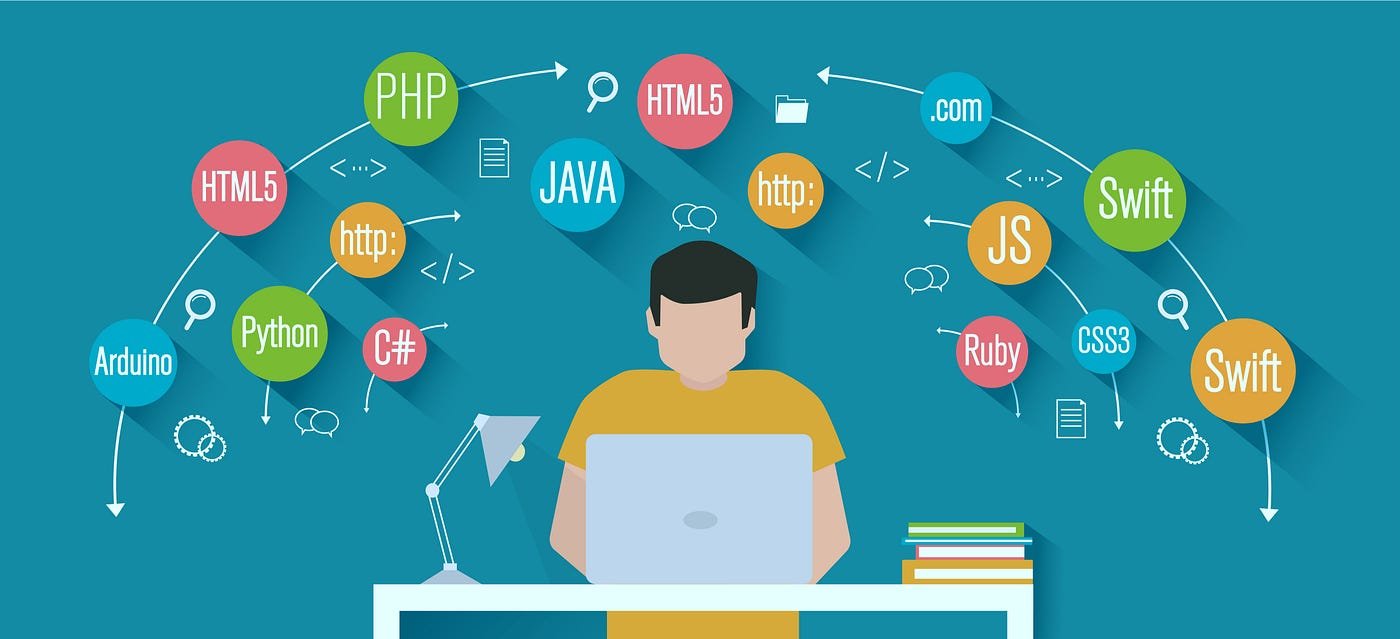The internet and websites have become a huge part of modern life. We use them for everything from finding information and entertainment to shopping, banking, social connections, and so much more. But have you ever wondered what makes websites work? In this guide, we’ll explore some of the most common programming languages used for custom web development.
HTML – The Building Blocks
If you’ve ever looked at a website’s source code, you’ve likely seen lots of HTML tags and text. HTML, which stands for HyperText Markup Language, is the standard code for creating the fundamental structure and content of web pages.
HTML isn’t technically a programming language since it can’t create dynamic functionality on its own. However, it provides the essential foundation for all websites. HTML uses a system of tags surrounded by angle brackets to identify and organise different types of web page elements like headings, paragraphs, images, links, and more.
While HTML controls the raw components that make up a web page, it needs to be combined with other languages to add styling and interactivity. Without HTML, though, there would be no web pages to access in the first place.
CSS – The Front-End Style Master
After the foundational HTML parts of a webpage are in place, the appearance and aesthetics are controlled using CSS, or cascading style sheets. Developers may specify exactly how HTML components should look with CSS.
You may specify nearly every element of a website’s appearance and feel using CSS, including fonts, colors, backdrops, borders, layouts, and animations. A web page’s parts or individual components may all be styled using CSS.
Using CSS significantly enhances the user experience by making websites more visually appealing and organised. It separates styling from HTML, allowing designers total control over appearance while keeping the code clean and maintainable.
JavaScript – Interactive Functionality
While HTML provides content structure and CSS controls styles, JavaScript brings dynamic interactivity to websites. JavaScript is a true programming language that defines the behavior of web pages.
Animated visuals, image sliders, clickable buttons, pop-up boxes, drop-down menus, and almost any other kind of user interface element that reacts to user input may all be made with JavaScript. It also enables web applications, games, video players, and other advanced functionality.
JavaScript is unique in that the code gets executed directly within the user’s web browser rather than on a server. This allows for fast, seamless interaction without page reloads. Modern websites wouldn’t be possible without JavaScript enhancing and driving the user experience.
PHP – Server-Side Scripting
A lot of websites need to be able to communicate with and access databases to store data such as user accounts, posts, transactions, and more. PHP is a computer language designed specifically for server-side scripting applications.
Instead of running in the user’s browser, PHP code is run on the website hosting server. It may be integrated into HTML to provide dynamic content for websites depending on user input or data from databases. This covers everything, from filling out online forms to presenting individual information.
Popular sites like Facebook, Wikipedia, and Yahoo were built using PHP due to its power, flexibility, and seamless integration with HTML. While not visible to users, PHP plays a crucial role in making data-driven websites and web applications function properly.
Python – Versatile Custom Web Development
Python is a high-level, general-purpose programming language that is becoming more and more popular for various web development tasks. Python’s simplicity and adaptability make it particularly tempting for data analysis and automation, as well as for developing websites, web apps, and APIs.
Many modern web frameworks like Django and Flask are built with Python, allowing developers to create data-driven sites rapidly and efficiently. Python’s clear syntax and extensive libraries enable features like user authentication, database integration, URL routing, and more.
Like PHP, Python is executed on the server side to handle back-end logic and database operations. However, it can also be used for client-side scripting and interact with other languages like JavaScript to enhance functionality.
Java – Enterprise-Level Scalability
While Java isn’t used directly for writing web page code, it’s a powerhouse language frequently utilised in professional web development environments and large enterprise applications. Java’s robust, secure, and scalable capabilities make it ideal for high-traffic websites and cloud-based systems.
Popular Java web frameworks like Spring make development more efficient by providing patterns and libraries to handle routine tasks. The Java Virtual Machine allows Java programs to run on any device, ensuring cross-platform compatibility.
Online banking, e-commerce sites, business services, and any high-demand, data-driven application commonly use Java on the server side. Its performance, reliability, and maturity make Java one of the most trusted languages for mission-critical web solutions.
While these represent some of the most widespread languages for coding websites and web apps, numerous other languages and frameworks can be used as well. The key is understanding how different languages complement each other to implement all aspects of web development:
- HTML for core content
- CSS for styling
- JavaScript for front-end interaction
- Server-side languages like PHP, Python, and Java for back-end logic and databases
Conclusion
As the internet and web technologies continue evolving, programming languages and their web capabilities may change. The fundamentals of properly utilising HTML, CSS, JavaScript, and server languages together will remain essential for creating dynamic, functional, and engaging websites in the future.
Senotrix is aware of how important a well-designed website is in the current digital environment. It takes more than simply being present online to stand out, interact with your audience, and produce significant outcomes. As your go-to custom web development services, we’re dedicated to assisting you in achieving these goals and beyond.
Related article: technoinsert
